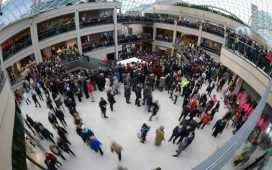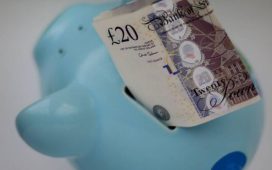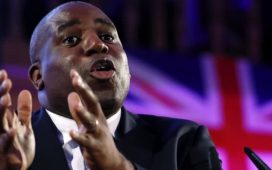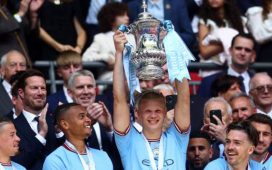
From the drizzly gloom over Hounslow, a Jumbo jet descended towards runway 27R at Heathrow airport.
The 20-year-old plane was one of 34 flown by the world’s biggest operator of the 747, British Airways. But the livery belonged to an airline that was subsumed into BA a quarter-century ago: BOAC.
“People dressed up to travel, they put their Sunday best on,” recalled Patricia Pearce, who started working as cabin crew for the British Overseas Airways Corporation in 1966.
Join Independent Minds
For exclusive articles, events and an advertising-free read for just
£5.99
€6.99
$9.99
a month
Get the best of The Independent
With an Independent Minds subscription for just
£5.99
€6.99
$9.99
a month
“People made an effort. We did have a lot of fun on, and off, the aircraft in those days.”
From the passenger perspective the late Sixties and early Seventies comprised a dreadful decade. Flying was, relative to today, spartan and high risk.
1/12
First class lobby of the A380 2014 model
AFP/Getty
2/12
Lounge bar on the A380 2015 model
AFP/Getty
3/12
First class suite of the A380 2014 model
AFP/Getty
4/12
First class compartment of the A380 2007 model
AFP/Getty
5/12
The 1st class bar and lounge of the A380 2004 model
AFP/Getty
6/12
Business class compartment of the A380 2007 model
AFP/Getty
7/12
Business class bathroom of the A380 2010 model
Getty
8/12
Bar on the A380, 2016
Getty
9/12
First class suite of the A380 2014 model
AFP/Getty
10/12
First class suite of the A380 2014 model
AFP/Getty
11/12
First class compartment of the A380 2014 model
AFP/Getty
12/12
Business class seating on the A380 2016 model
Getty
1/12
First class lobby of the A380 2014 model
AFP/Getty
2/12
Lounge bar on the A380 2015 model
AFP/Getty
3/12
First class suite of the A380 2014 model
AFP/Getty
4/12
First class compartment of the A380 2007 model
AFP/Getty
5/12
The 1st class bar and lounge of the A380 2004 model
AFP/Getty
6/12
Business class compartment of the A380 2007 model
AFP/Getty
7/12
Business class bathroom of the A380 2010 model
Getty
8/12
Bar on the A380, 2016
Getty
9/12
First class suite of the A380 2014 model
AFP/Getty
10/12
First class suite of the A380 2014 model
AFP/Getty
11/12
First class compartment of the A380 2014 model
AFP/Getty
12/12
Business class seating on the A380 2016 model
Getty
In 1968 an engine on a BOAC Boeing 707 caught fire shortly after the plane took off from Heathrow’s other runway. After the engine fell off and the plane landed in flames, five people lost their lives in the emergency evacuation.
In 1970 a BOAC jet was hijacked to Dawson’s Field in Jordan.
With limited range on most aircraft, the airline schedules were shocking by today’s standards: to reach Mauritius involved stops in Nicosia, Nairobi and the Seychelles, almost doubling today’s 12-hour non-stop journey.
Heathrow-Los Angeles operated non-stop three times a week, compared with BA’s current schedule of three daily flights.
BOAC was state owned, as was its short-haul counterpart, British European Airways (BEA). They merged in 1974, a union that some staff still mourn.
The sight may have brought a tear to the eye of an ardent Brexiteers, harking back to an era before the UK joined the Common Market, when the BOAC “Speedbird” logo bestrode the world and when BOAC had the British monopoly on long-haul flying.
Outside the hangar used for the welcome, Virgin Atlantic had unhelpfully parked a pair of much more modern Boeing 787s – a reminder of the benefits of competition.
Inside the hangar, curators from the British Airways heritage centre had created a pop-up museum devoted to BOAC, featuring inflight menus and entertainment listings.
Drinks had to be bought on board long-haul flights, though prices were low: £0.15 for sherry, vermouth or beer.
Audio inflight entertainment was provided, in mono, through plastic stethoscopes and involved Tony Blackburn introducing “Pop into the Seventies”.
In an era when air tragedies were sadly commonplace, whoever was responsible for the programming was not fully attuned to inappropriate titles: tunes included “Don’t Let It Die”, “Help Me Make It Through The Night” and “Destiny”.
The Beatles’ “Back In The USSR” was not included, even though it actually mentions the airline in the line: “Flew in from Miami Beach BOAC.”
Another song was B B KIng’s “Help The Poor”. Mr Blackburn was also involved in marketing BOAC’s 747 flights, advertising a return flight to New York for as little as £103 – about £1,300 today.
In 2019 you can fly to JFK airport and back for £274 return, And the airline is marking the centenary of the year when a predecessor of British Airways started flying.
On 25 August 1919, Aircraft Transport and Travel Limited (AT&T), which later became Daimler Airways and then part of Imperial Airways, launched the world’s first daily international scheduled air service between London and Paris.
The special 747 had been painted at Dublin airport. It is the first of a series of four retro liveries intended to celebrate the centenary.
Hamish McVey, BA’s head of brands, said: “BOAC is such an important part of our heritage, and that’s why we’re doing it.”
The “BOAC” Boeing 747, registration G-BYGC, will begin commercial service to New York retain the colours until it is finally scrapped in 2023.
British Airways expects to keep some other Jumbo jets in service until 2024.












